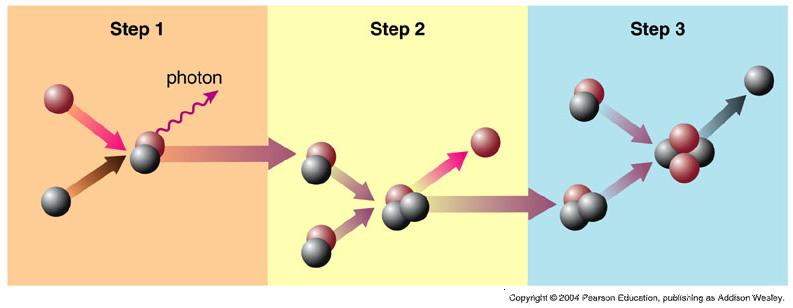 | In helium production, a proton and a neutron initially collide to produce a deuterium (an isotope of hydrogen composed of 1 proton and 1 neutron, H2) and energy (a photon). Next, two deutrium nuclei collide to produce an isotope of helium (He3) composed of 2 protons and 1 neutron, and 1 excess neutron. In the final step, He3 may capture a deuterium to make 1 helium (He4) and 1 proton or two He3 may merge to form a He4 and 2 leftover protons. |